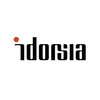A Study to Evaluate the Effect of ACT-774312 in Subjects With Bilateral Nasal Polyposis
Bilateral Nasal Polyposis

About this trial
This is an interventional treatment trial for Bilateral Nasal Polyposis
Eligibility Criteria
Inclusion Criteria:
- Signed informed consent in the local language prior to any study mandated procedure.
- A minimum bilateral nasal polyp score (NPS) of 5 out of a maximum of 8 for both nostrils (with at least a score of 2 for each nostril) despite completion of a prior intranasal corticosteroids (INCS) treatment for at least 8 weeks before screening, with at least the 6 last weeks on INCS spray.
Presence of at least 2 of the following symptoms at screening:
- nasal blockade/obstruction
- nasal discharge (anterior/posterior nasal drip)
- reduction or loss of smell.
- Male and female participants aged between 18 and 70 years (inclusive) at screening.
- Systolic blood pressure 90 to 160 mmHg, diastolic blood pressure 50 to 100 mmHg, pulse rate 45 to 100 bpm (inclusive), measured on the dominant arm, after 5 minutes in the supine position at screening.
- Women of childbearing potential must have a negative serum pregnancy test at screening and a negative urine pregnancy test pre-dose on Day 1. Women of childbearing potential must consistently and correctly use (from at least first dosing, during the entire study, and for at least 30 days after last study treatment intake) 1 highly effective method of contraception with a failure rate of less than 1% per year, be sexually abstinent, or have a vasectomized partner. Hormonal contraceptive must have been initiated at least 1 month before first study treatment administration.
Exclusion Criteria:
- CYP2C9 poor metabolizer.
- Participant with severe renal function impairment (≤ 29 mL/min/1.73 m2) which is defined by estimated glomerular filtration rate at screening using the Modification of Diet in Renal Disease (MDRD) formula.
- Participant with Sino-Nasal Outcome Test (SNOT-22) less than 20.
- Participant who has required oral corticosteroids (OCS) within the 2 months before screening or is scheduled to receive OCS during the study period for another condition.
- Participant who has required INCS drops within the 6 weeks before screening.
- Participant who was injected with long-lasting activity corticosteroids within the 3 months before screening or is scheduled to receive these during the study period for another condition.
- Participant who has undergone any nasal surgery within 6 months before screening.
Participant with conditions/concomitant diseases making them non-evaluable for the primary efficacy endpoint such as:
- Antrochoanal polyps
- Nasal septal deviation that occludes at least one nostril
- Acute sinusitis, nasal infection or upper respiratory infection at screening or in the 2 weeks before screening
- Ongoing rhinitis medicamentosa
- Churg-Strauss syndrome, Young's syndrome, Kartagener's syndrome or dyskinetic ciliary syndromes, Cystic fibrosis
- Signs or a CT scan suggestive of Allergic fungal rhinosinusitis.
Participants with co-morbid asthma are excluded if:
- Forced expiratory volume in one second (FEV1) ≤ 60% of predicted normal OR
- An exacerbation requiring systemic (oral and/or parenteral) steroid treatment or hospitalization (>24 h) for treatment of asthma has occurred within 3 months prior screening OR
- They are on a dose higher than 1000 μg fluticasone or the equivalent of inhaled corticosteroids (ICS).
- Any circumstances or conditions, which, in the opinion of the investigator, may affect full participation in the study or compliance with the protocol.
- Participants with active autoimmune disease (e.g., Hashimoto's thyroiditis, Graves' disease, inflammatory bowel disease, primary biliary cirrhosis, systemic lupus erythematosus, multiple sclerosis, psoriasis vulgaris, rheumatoid arthritis).
- Participant considered as vulnerable (e.g., sponsor or site employee, investigator subordinate, participant incapable of giving consent, participant committed to an institution by way of official or judicial order).
Participant with liver injury related criteria:
- Underlying hepatobiliary disease OR
- Alanine aminotransferase greater than 3 x upper limit of normal, OR
- or Bilirubin greater than 2 x upper limit of normal.
- Participant with unstable NPS during the run-in period, i.e. altered score at Day 1 when compared to the screening NPS (assessed locally by the investigator).
Sites / Locations
- University Hospital Ghent
- Charité Research Organisation GmbH
Arms of the Study
Arm 1
Arm 2
Experimental
Placebo Comparator
ACT-774312
Placebo
Participants will receive ACT-774312 (400 mg twice daily) in the morning and evening with or without food for 12 weeks together with mometasone furoate nasal spray.
Participants will receive placebo twice daily in the morning and evening with or without food for 12 weeks together with mometasone furoate nasal spray.
Outcomes
Primary Outcome Measures
Secondary Outcome Measures
Full Information
1. Study Identification
2. Study Status
3. Sponsor/Collaborators
4. Oversight
5. Study Description
6. Conditions and Keywords
7. Study Design
8. Arms, Groups, and Interventions
10. Eligibility
12. IPD Sharing Statement
Learn more about this trial
